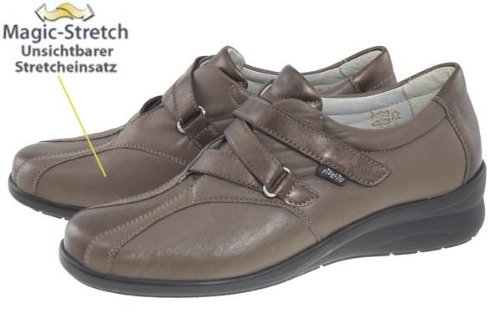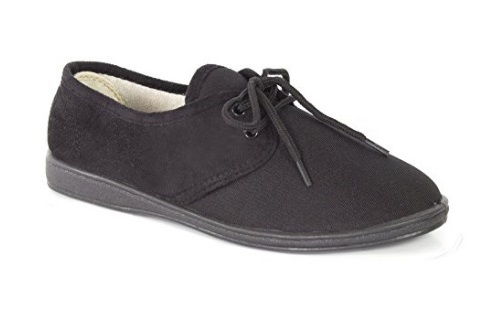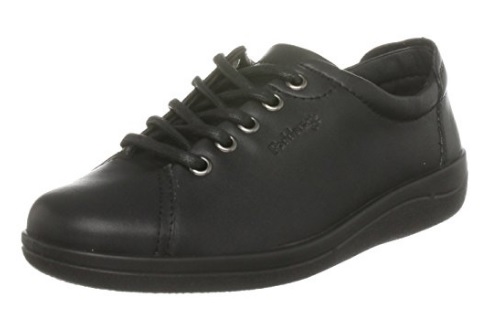In scientific circles, they don’t call it the big toe. It is often referred to as the Hallux. This should give you an idea of which part of the body the conditions Hallux limitus and Hallux rigidus affect.
Your big toe is extremely important to motion. It provides the support and propulsive force you need to walk and run. In the event of injury or dysfunction in that toe, many other parts of your body from your knees to your back will suffer. This is because they have to take on added stress when you are standing, walking or running.
Hallux limitus happens when your big toe loses some of its motion and flexibility. You find that you cannot move the toe sideways or upwards without pain and stiffness. If the condition worsens to the point where all motion is lost or severely limited, we call that Hallux rigidus.
Severe cases of Hallux limitus and rigidus may require surgery. But in many situations, physical therapy, toe stretching and pain relievers can be sufficient. Another thing that podiatrists strongly recommend is wearing the right shoes that give your toes plenty of space and allow your big toe to recuperate without stress.
Here are the essential considerations experts say you should keep in mind when shopping for footwear.
Table of Contents
Key considerations
1. Roomy toe box and larger width
Hallux limitus and rigidus are idiopathic conditions. This means we don’t know what exactly causes them. But researchers have a few theories. One of them is that wearing the wrong kind of shoes could cause or contribute to Hallux problems.
Specifically, shoes with a narrow toe box could cause gradual deterioration in the function of the big toe, causing it to weaken and lose its range of motion.
So the first thing to check when buying shoes for Hallux rigidus/limitus is that there is a generous toe box. This ensures that your Hallux and other toes have enough room to splay and move. Generally, it’s a good idea to go for extra-wide shoes (not just at the toe box but across the full length) that will not constrict any part of your foot.
2. Adequate support (with a forefoot rocker sole)
With a weakened and painful big toe, your feet will be providing less support than usual. The body compensates by shifting some of the weight to joints and muscles in your legs, knees and lower back. That’s why these areas start to ache when you have Hallux limitus.
A good shoe should provide the missing support, thus ensuring that other joints don’t take on the extra weight and shock when you are moving.
Podiatrists recommend buying shoes with a forefoot rocker. The rocker reduces impact on your toes when you are walking or running. Essentially, it performs the work your big toe should have been doing – absorbing shock and providing propulsive force to help you walk smoothly.
For added support, buy a shoe with both mid-sole and forefoot rockers.
3. Comfortable insole
Finally, make sure that the insole is well-padded to absorb pressure and impact when you are standing, walking or running. At this point your feet are not at their best and any undue pressure on your feet could aggravate your condition. A comfortable insole allows you to carry on normally while still allowing your big toe to heal.
The best Hallux Limitus shoes – Our 5 top picks [UK market]
1. Women’s Bunion Hallux Magic Stretch Shoe
A low heel provides just the amount of support and propulsion to take the pressure off your Hallux.
Why we love it:
- Durable leather material.
- Removable insole meaning you can insert your own orthotics.
- Ideal for Hallux limitus as well as bunions.
2. ELASTANE SHOE
When you wear the shoe, the lightweight material stretches to accommodate your toes and feet.
Why we love it:
- Lightweight and very stretchy. The upper is seam-free for full contouring.
- Low heel for support.
- Also ideal for swollen feet, bunions, corns and extra-wide feet.
3. Padders Women’s Galaxy Comfort Lace Ups
Why we love it:
- Durable leather upper and gum rubber sole.
- Available in several colours including red, black, brown and navy.
- Extra wide fit ideal for different foot conditions including bunions and swollen feet.
4. Legero Tanaro Women’s Low-Top Sneakers
The outer material is also flexible enough to expand should you need extra room.
Why we love it:
- Soft inner lining that eliminates any friction point with your feet. This is important if your big toe is sore or in pain.
- Low heel and slight forefoot rocker for added support.
- Great style.
5. Hergos H 8101 Black Suede Shoes
If you are looking for a pair of stylish formal or semi-formal shoes, the Hergos H 8101 shoes are a great choice.
Why we love it:
- Wide fit from heel to toe.
- Great style.
- Low heel and forefoot rocker provides additional support when walking.
Frequently Asked Questions
1. Which are the best shoes for hallux limitus/rigidus?
Look for roomy shoes with a wide toe box. This gives your big toe ample of room to move. Your shoes should also provide plenty of support when standing, walking or running.
Rocker style shoes provide the best support for people with hallux limitus or rigidus. Look for rocker shoes that curve upwards towards the front. This keeps the big toe from taking on too much pressure when you are on the go.
FInally, get shoes with a soft insole that reduces impact when your foot hits the ground.
2. Is hallux limitus or rigidus reversible?
Yes, most cases of hallux limitus and rigidus can be reversed or their severity reduced to the point where you can function normally.
Depending on the severity of your condition, some treatment options include physiotherapy, custom shoes, orthotic devices, medication, and surgery.
For mild cases, simply switching to better footwear and doing some self therapy (such as foot stretching and light walking) can reverse the problem.
3. Can I still wear heels if I have hallux limitus/rigidus?
Yes, you definitely can. You just need to choose the right kind of heels that will not worsen your condition.
Stay away from high heels. They are not supportive and most tend to have a narrow toe box that will certainly worsen the health of your big toe.
Choose lower and wider heels. We especially love wedges and platform sandals. Look for those with a wide front to give your toes plenty of room to move and prevent pressure on your big toe.









